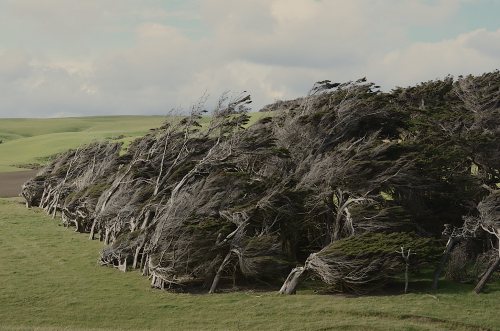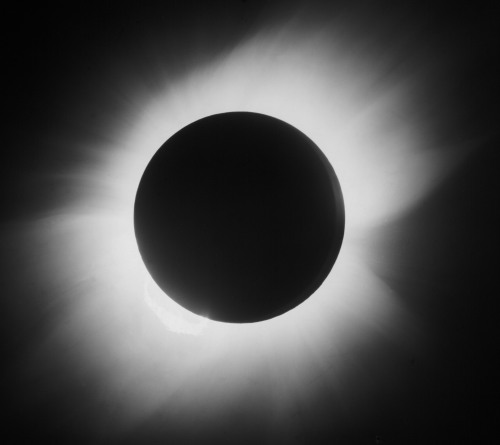Watching The Clouds Go By On #Mars. Check Out These Atmospheric Ripples!

Watching the clouds go by on #Mars. Check out these atmospheric ripples!
More Posts from Hannahhaifisch and Others








Hubble Views The Final Frontier For Dark Matter
“This phenomenon of gravitational lensing stretches galaxies into streaks and arcs, magnifying them, and creating multiple images. It also enables us to reconstruct the mass distribution of the cluster, revealing that it’s mostly due to dark matter.”
When you look out at the distant Universe, you can see all sorts of things: stars, galaxies, clusters of galaxies, going as far back into the distant past as our telescopes can image. But where you have the greatest concentrations of mass, an extreme phenomenon emerges: that of gravitational lensing. Any foreground objects lying behind that mass will have their light stretched, magnified and distorted by the intervening matter. Recently, as part of the Hubble Frontier Fields program, the telescope followed-up on galaxy cluster Abell 370, and revealed the most spectacular gravitational lensing signal ever seen in a galaxy cluster. Most importantly, it provides some very strong evidence not only for dark matter’s existence, but for its presence distinct from any galaxies at all.
Come get the full story in images, videos, and no more than 200 words on this edition of Mostly Mute Monday!

Sand and water make a remarkable team when it comes to building. But the substrate – the surface you build on – makes a big difference as well. Take a syringe of wet sand and drip it onto a waterproof surface (bottom right), and you’ll get a wet heap that flows like a viscous liquid. Drop the same wet sand onto a surface covered in dry sand (bottom left), and the drops pile up into a tower. Watch the sand drop tower closely, and you’ll see how new drops first glisten with moisture and then lose their shine. The excess water in each drop is being drawn downward and into the surrounding sand through capillary action. This lets the sand grains settle against one another instead of sliding past, giving the sand pile the strength to hold its weight upright. (Video and image credit: amàco et al.)






slope point, the southernmost tip on new zealand’s south island, is hit with such persistently violent southern antarctic winds that trees grow in the leeward direction. (click pic or link for credit x, x, x, x, x, x)

Orion

Photograph of the May 1919 solar eclipse captured by Arthur Eddington, which proved Einstein’s theory of general relativity.
Credit: SSPL/Getty Images

0002

A movie showing the dynamics of the inner part of the Crab Nebula made using the Chandra X-ray Observatory.
Credit: NASA/CXC/ASU/J.Hester et al.


Manganese Dendrites on Limestone
Locality: Solnhofen, Bavaria, Germany

For the first time, scientists have subjected quantum entanglement to extreme levels of acceleration, and there’s nothing fragile about this “spooky action at a distance”- it’s way more robust than we thought.
In recent experiments, entangled particles held firm even while being accelerated to 30g - 30 times Earth’s acceleration - and the results could have a big impact on our search for a unified theory of modern physics.
“These experiments shall help [us] unify the theories of quantum mechanics and relativity,” says one of the team, Rupert Ursin, from the University of Vienna, Austria.
Continue Reading.
-
 elise1917 liked this · 1 year ago
elise1917 liked this · 1 year ago -
 asteroid-hyalosis reblogged this · 1 year ago
asteroid-hyalosis reblogged this · 1 year ago -
 rainbowkittendemise reblogged this · 2 years ago
rainbowkittendemise reblogged this · 2 years ago -
 itsalwayssol liked this · 2 years ago
itsalwayssol liked this · 2 years ago -
 notamushimaster liked this · 2 years ago
notamushimaster liked this · 2 years ago -
 pierog reblogged this · 2 years ago
pierog reblogged this · 2 years ago -
 stroebe2 reblogged this · 2 years ago
stroebe2 reblogged this · 2 years ago -
 stroebe2 liked this · 2 years ago
stroebe2 liked this · 2 years ago -
 upkaos reblogged this · 2 years ago
upkaos reblogged this · 2 years ago -
 upkaos liked this · 2 years ago
upkaos liked this · 2 years ago -
 supergalatic-cat reblogged this · 2 years ago
supergalatic-cat reblogged this · 2 years ago -
 supergalatic-cat liked this · 2 years ago
supergalatic-cat liked this · 2 years ago -
 peaucreneau liked this · 2 years ago
peaucreneau liked this · 2 years ago -
 da-sonickm reblogged this · 2 years ago
da-sonickm reblogged this · 2 years ago -
 susativa liked this · 2 years ago
susativa liked this · 2 years ago -
 almassacro reblogged this · 2 years ago
almassacro reblogged this · 2 years ago -
 almassacro liked this · 2 years ago
almassacro liked this · 2 years ago -
 leavemyheartdownbythewater liked this · 2 years ago
leavemyheartdownbythewater liked this · 2 years ago -
 arsanimarum reblogged this · 2 years ago
arsanimarum reblogged this · 2 years ago -
 owlservice reblogged this · 2 years ago
owlservice reblogged this · 2 years ago -
 useless-arms reblogged this · 2 years ago
useless-arms reblogged this · 2 years ago -
 yugen-iki liked this · 2 years ago
yugen-iki liked this · 2 years ago -
 cutyouloose reblogged this · 2 years ago
cutyouloose reblogged this · 2 years ago -
 rainbowkittendemise liked this · 2 years ago
rainbowkittendemise liked this · 2 years ago -
 gato468 liked this · 2 years ago
gato468 liked this · 2 years ago -
 tameimparker reblogged this · 2 years ago
tameimparker reblogged this · 2 years ago -
 tameimparker liked this · 2 years ago
tameimparker liked this · 2 years ago -
 koulamarababushka liked this · 2 years ago
koulamarababushka liked this · 2 years ago -
 ernesisdifferent liked this · 2 years ago
ernesisdifferent liked this · 2 years ago -
 esmentiraa reblogged this · 2 years ago
esmentiraa reblogged this · 2 years ago -
 aealoarcturus reblogged this · 2 years ago
aealoarcturus reblogged this · 2 years ago -
 golden-lace reblogged this · 2 years ago
golden-lace reblogged this · 2 years ago -
 golden-lace liked this · 2 years ago
golden-lace liked this · 2 years ago -
 aealoarcturus liked this · 2 years ago
aealoarcturus liked this · 2 years ago -
 xenawolf reblogged this · 2 years ago
xenawolf reblogged this · 2 years ago -
 xenawolf liked this · 2 years ago
xenawolf liked this · 2 years ago -
 daturanerium reblogged this · 2 years ago
daturanerium reblogged this · 2 years ago -
 daturanerium liked this · 2 years ago
daturanerium liked this · 2 years ago -
 officialandromeda reblogged this · 2 years ago
officialandromeda reblogged this · 2 years ago -
 luna-del-alba liked this · 2 years ago
luna-del-alba liked this · 2 years ago -
 you-know-the-usual liked this · 3 years ago
you-know-the-usual liked this · 3 years ago -
 rhodeytonies liked this · 4 years ago
rhodeytonies liked this · 4 years ago -
 keanuismygod liked this · 4 years ago
keanuismygod liked this · 4 years ago -
 yolandaperez liked this · 5 years ago
yolandaperez liked this · 5 years ago -
 mcmackelster liked this · 5 years ago
mcmackelster liked this · 5 years ago